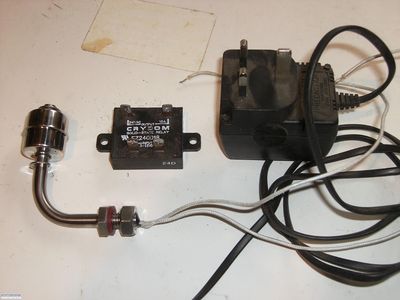Difference between revisions of "Multi-tasking processor"
(→Usage) |
|||
| Line 51: | Line 51: | ||
The wvo goes into the drum via a 400 micron drum filter,its then heated with the option of circulating to speed dewatering,it is then pumped into the storage drum via 20 and 5 micron filters,most filters are rated at 0.8 bar so there is a bypass valve which ensures the oil is never forced through the filters,from the storage drum the oil goes through a 1 micron filter to the car/drums. | The wvo goes into the drum via a 400 micron drum filter,its then heated with the option of circulating to speed dewatering,it is then pumped into the storage drum via 20 and 5 micron filters,most filters are rated at 0.8 bar so there is a bypass valve which ensures the oil is never forced through the filters,from the storage drum the oil goes through a 1 micron filter to the car/drums. | ||
| + | |||
| + | Note: When useing this filter system (YOU MUST DROP WATER & FATS) after heating and before pumping out, if not you run the risk of emulsification with newly heated settled oil and the crud layer zone water/fats. | ||
<gallery caption="Click pictures to enlarge" widths="400px" heights="300px" perrow="3" align="center"> | <gallery caption="Click pictures to enlarge" widths="400px" heights="300px" perrow="3" align="center"> | ||
| Line 57: | Line 59: | ||
File:Set_up_009.jpg|400 micron drum filter | File:Set_up_009.jpg|400 micron drum filter | ||
</gallery> | </gallery> | ||
| − | |||
| − | |||
== Safety Point == | == Safety Point == | ||
Revision as of 20:11, 18 May 2011
Waste Vegetable Oil can be collected from numerous outlets, for example; cafes, public houses, restaurants, fish and chips shops - anywhere that uses vegetable oils for cooking. The waste produced can be used as a road fuel, but needs to be cleaned before use in a road vehicle. Waste oil contains impurities from food that have been cooked into it, water, meat, fats, etc. These need to be separated from the oil to make it ready for use. There are alot of different ways to clean oil, all variations on a theme; below is a widely used separation system which a lot of domestic users find best, speeding up the natural process of separation.
See also - Filtering waste vegetable oil
Contents
K.H. Dewatering and filter system (which includes a bypass to keep the filters within there pressure rating)
Parts List
- 3mts 22mm pipe
- 2x 3/4 hosetails
- 3mt clear 1" pipe
- 3x tees
- 9x 90s
- 1x 45
- bypass valve
- 5x tank connectors
- 5x nylon washers
- 3x joiners
- 4x 3/4"-22mm
- 6x full bore valves
- 2x pressure gauges
- 18" immersion heater
- 3x 10" filters plus brackets/elements
- mechanical flange
- 400mic drum filter
- 205lt clip top drum
- 120lt HDPE clip top drum
- tam 105 pump
- 2x 1"-22mm
- 4 mt flex
- 2 plugs
- 22-15-22 tee
- 1x 15mm ball valve
Total cost @ 01/05/11 £325
- Click pictures to enlarge
Usage
The wvo goes into the drum via a 400 micron drum filter,its then heated with the option of circulating to speed dewatering,it is then pumped into the storage drum via 20 and 5 micron filters,most filters are rated at 0.8 bar so there is a bypass valve which ensures the oil is never forced through the filters,from the storage drum the oil goes through a 1 micron filter to the car/drums.
Note: When useing this filter system (YOU MUST DROP WATER & FATS) after heating and before pumping out, if not you run the risk of emulsification with newly heated settled oil and the crud layer zone water/fats.
- Click pictures to enlarge
Safety Point
There is a float switch which cuts out the pump at low oil level
Main Features
My aim was to make a self contained filter unit to which you can add extra storage drums as needed but to also be affordable and portable. Also if either filter blocks the bypass valve will send the oil back into the main drum where it will just circulate in a loop
- Click pictures to enlarge







